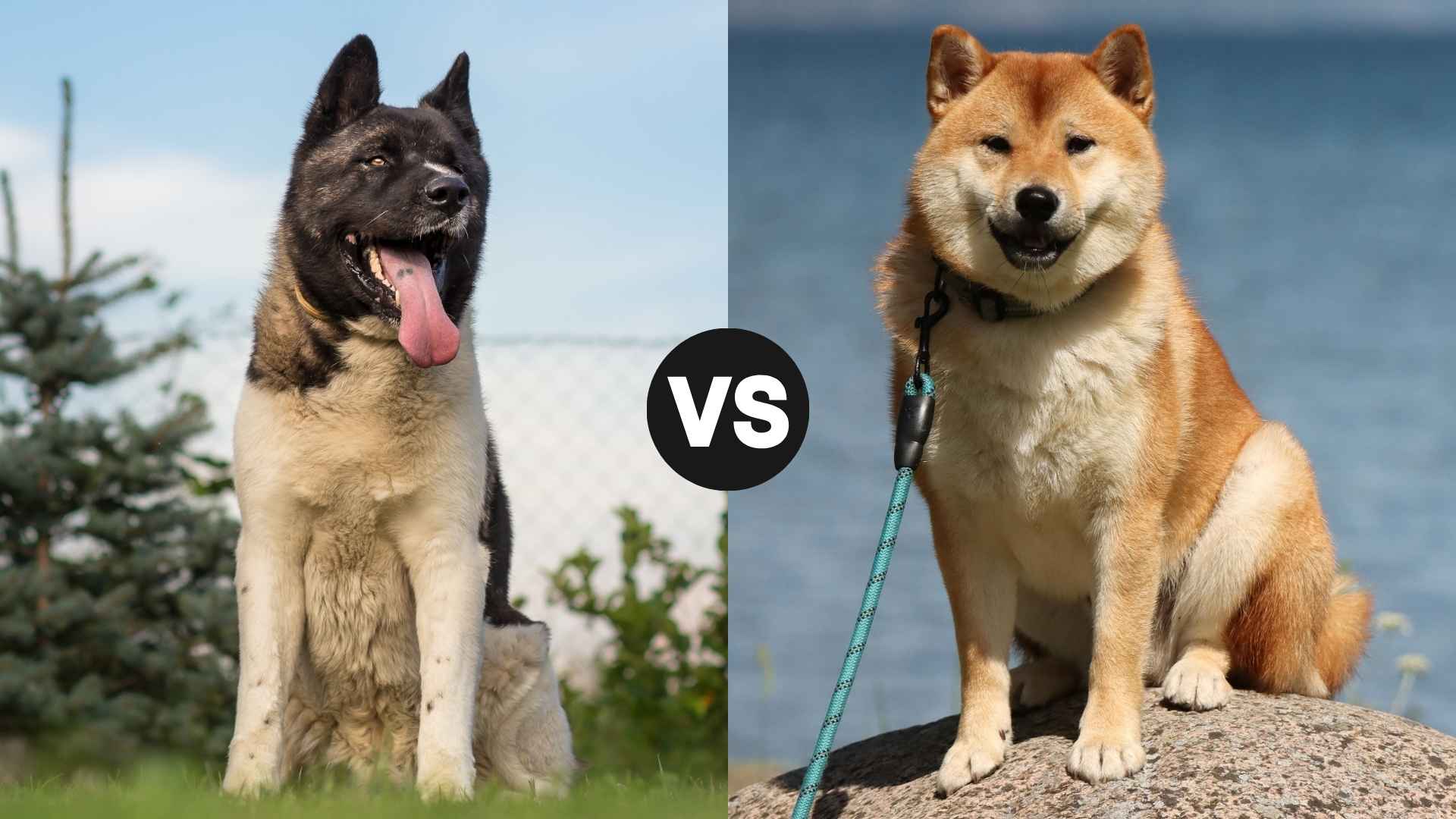You look at a picture of an Akita, strong build, curled tail, sharp eyes. Then you see another photo, labeled the same, but everything feels… softer. Is this a mistake? No. It’s the same name, but two entirely different dogs.
Most people never realize it. They just say “Akita” and move on. But once you step into their world, the details hit hard. One was molded by Japanese history, the other by the American war.
One is calm and distant, the other bold and confrontational. And this isn’t about facts on paper—it’s how they live with you, how they guard you, how they trust you. That’s what makes this comparison not just interesting, but necessary.
If you’re curious about which Akita is right for your home, or you’ve simply wondered why they seem so different, you’re in the right place. Let’s break it all down: American vs Japanese Akita—here’s what matters most.
American vs. Japanese Akita
History and Background
Roots in ancient Japan
Akita dogs have deep historical ties to Japan, originally bred for hunting large game in snowy mountain regions. These strong, resilient dogs were prized for their bravery and loyalty. Over the centuries, they became a symbol of protection and good health in Japanese culture.
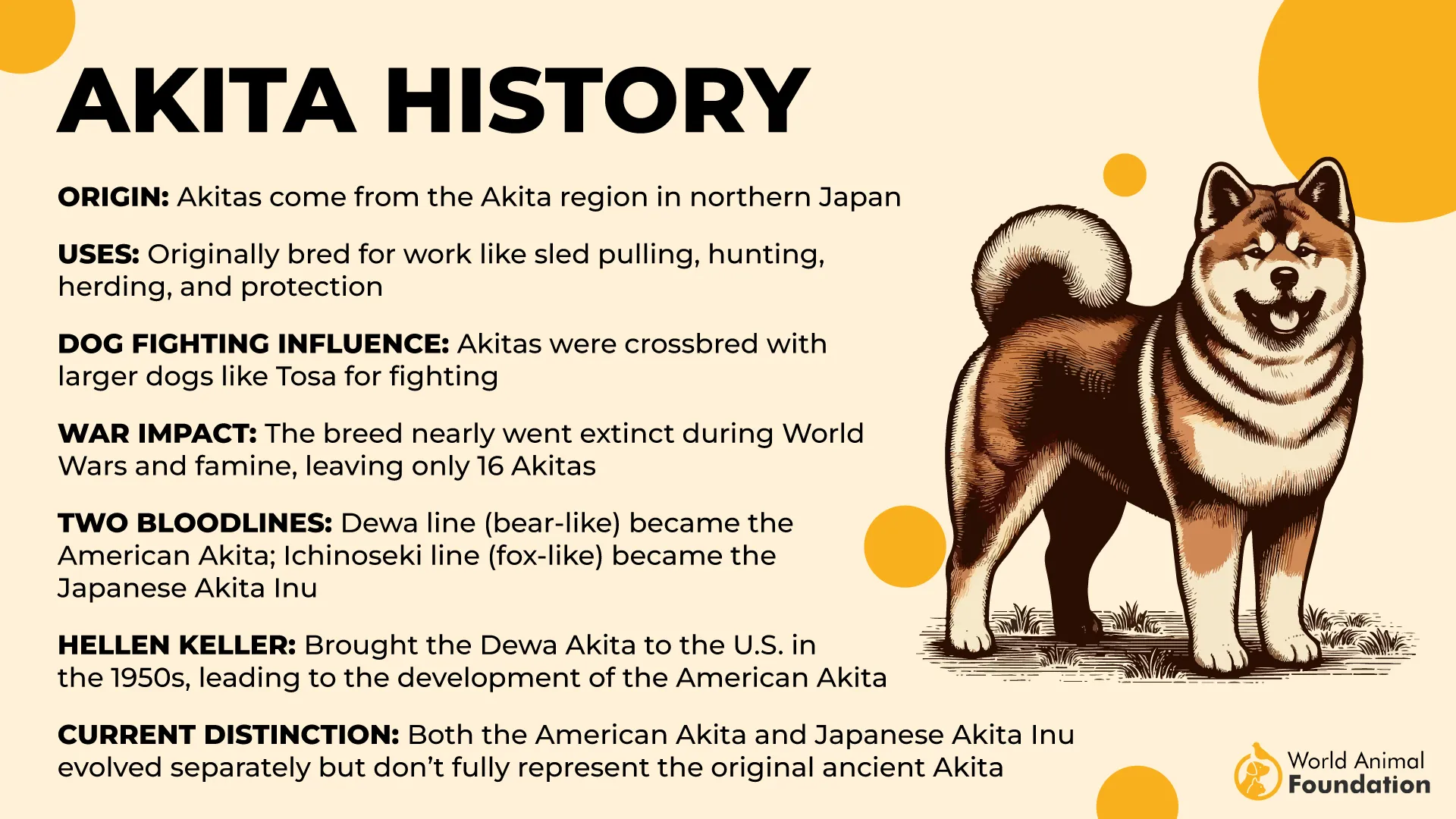
The breed splits post-WWII
After World War II, American and Japanese akitas began to diverge due to different breeding goals, as per Robunaga. In the U.S., breeders focused on size, power, and a broader build. Meanwhile, Japanese breeders preserved the original look, more fox-like features, and a narrower frame, as mentioned in the AKC.
Cultural influences on breed standards
The American and Japanese akitas evolved based on cultural preferences and kennel standards. American lines embraced a rugged, imposing appearance with a strong, bear-like head. Japanese lines remained closer to their historic type, with an emphasis on elegance and tradition.
Two breeds, one origin
Though both versions trace back to the same noble roots, their modern traits differ in both appearance and temperament. Today, enthusiasts often recognize them as distinct types under the larger Akita dogs category. Their shared heritage, however, remains undeniable.
Appearance and Distinctive Traits
Size and body structure differences
When comparing the American Akita to the Japanese type, the size difference is impossible to miss. The American variety is heavier, with a broader chest and more muscle mass. In contrast, Japanese Akitas tend to have a lighter, more fox-like appearance with refined features.
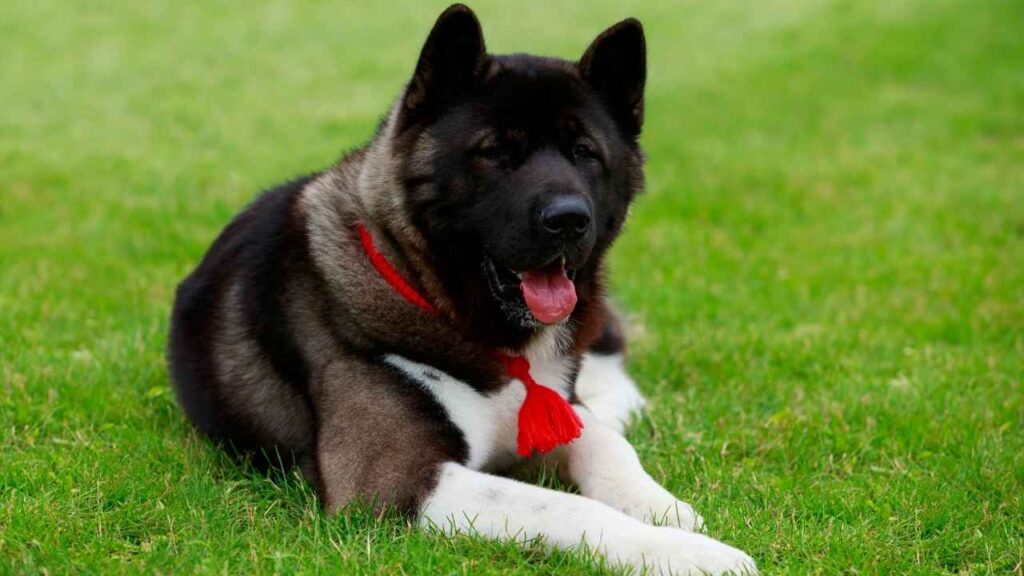
Facial features and head shape
One of the most noticeable traits between these two distinct breeds is the head shape. The American Akita has a bear-like, blocky head with small, deep-set eyes. The Japanese type features a more angular face, with almond-shaped eyes and upright ears that sit higher, as stated in the AKC.
Coat type and texture
Both dog breeds sport thick double coats, but the texture can vary slightly between them. The American version often has a denser outer layer, giving it a more rugged look. Japanese Akitas usually appear smoother and more polished, though equally insulated.
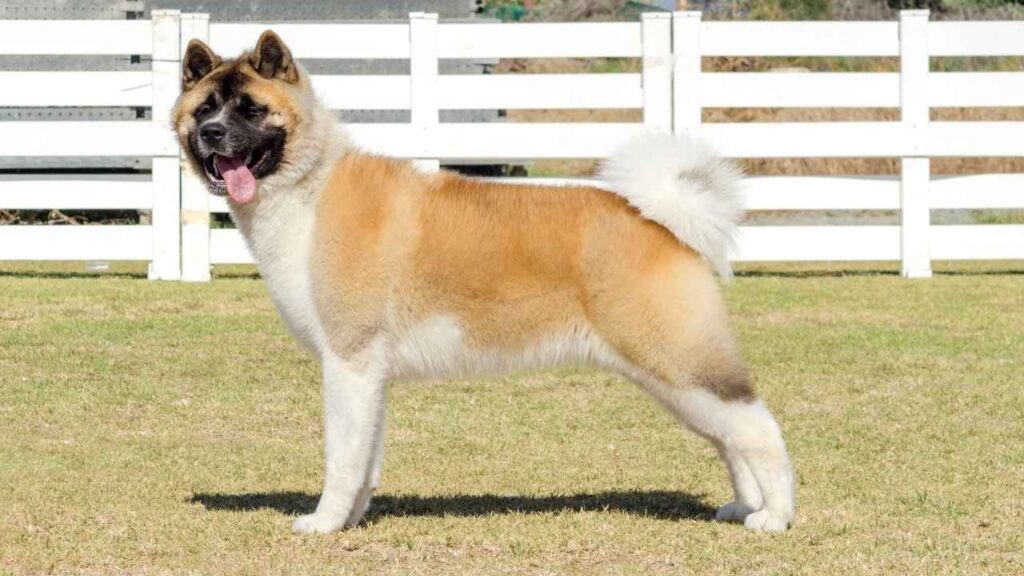
Color variations and markings
Color is another area where these two distinct breeds stand apart visually. The American Akita allows for a wide range of colors, including pinto and black masks. Japanese Akitas are more limited, typically in red, sesame, or white, and must follow stricter standards.
Personality and Behavioral Tendencies
Temperament and independence
Both types are known for their calm and composed nature, often displaying quiet confidence rather than hyperactivity. They’re deeply loyal but not overly clingy, preferring selective affection over constant attention. This independent streak makes them better suited to experienced owners.
Behavior around other dogs
Neither of the two dog breeds is naturally outgoing with other dogs, especially those of the same sex. Without proper boundaries and early socialization, they may become territorial or aloof. Controlled introductions and firm guidance are essential in multi-dog households.
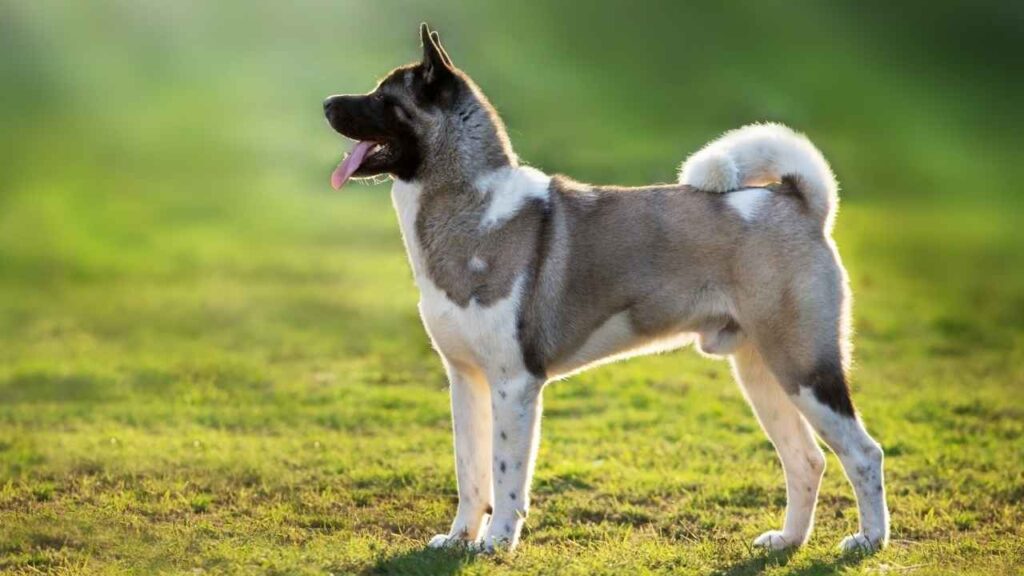
Instincts and adaptability
American Akitas are typically more protective and imposing in their demeanor, showing strong guarding instincts, as per Kingpet. Japanese Akitas lean slightly more toward aloofness, with a calmer energy indoors. Both benefit from environments where structure and routine are part of daily life.
Living with other pets
Their strong prey drive means they may not always mix well with smaller animals or other pets. Early socialization helps curb instinct-driven reactions and fosters tolerance. Consistent supervision and training are key when introducing them into multi-pet homes.
Health Profile and Life Expectancy
Longevity and general health patterns
When comparing the two, the Japanese Akita tends to live slightly longer, averaging 12–15 years, while the American type ranges around 10–13.
Genetic diversity plays a role in this variation, with selective breeding affecting both. Like many dogs, lifespan can be influenced by early care and regular checkups.
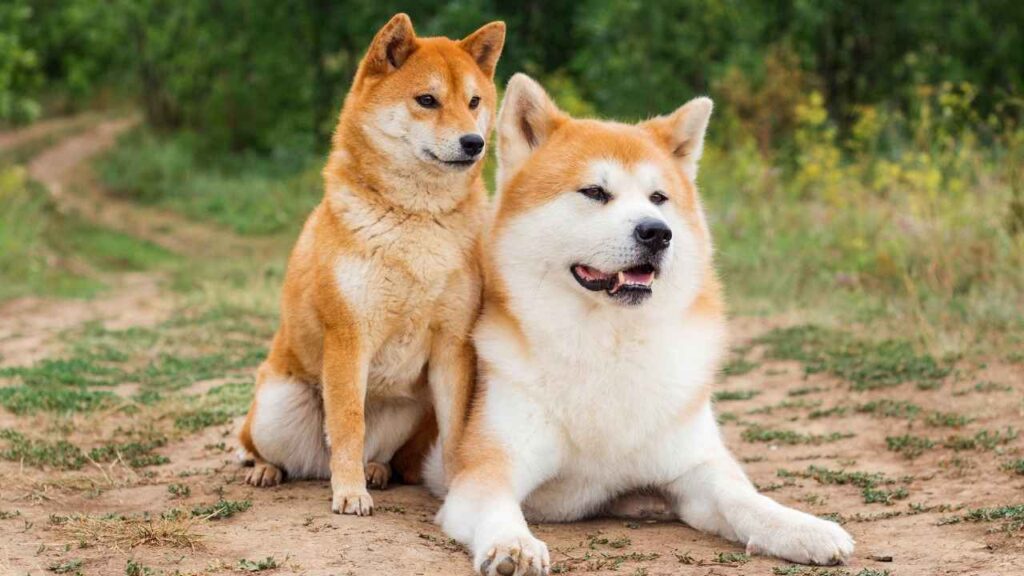
Vulnerability to major conditions
The Akita breed is prone to several inherited issues, including thyroid imbalances and autoimmune disorders that may emerge in early adulthood.
Among these, hip dysplasia remains a shared concern in both types, though it’s reported slightly more in the American variant. Early screening and weight management are critical preventive steps.
Diet and daily care needs
A balanced diet tailored to their energy levels and joint health can help minimize long-term risks. The American type may need closer monitoring due to its heavier build, which can stress the joints. Japanese Akitas, being leaner, typically require fewer caloric adjustments unless activity levels shift.
Care, Grooming, and Upkeep
Coat care that suits their lifestyle
Both Akitas have dense double coats that shed heavily twice a year. The American variety has a thicker, fuller coat requiring more regular brushing. Japanese Akitas have a straighter outer coat but still need weekly grooming to control loose fur.
Bathing and skin health needs
They’re naturally clean dogs, so bathing once every few months is enough. Overbathing can dry out their skin, so mild shampoos are best. During heavy shedding, warm baths can help loosen the undercoat more effectively.
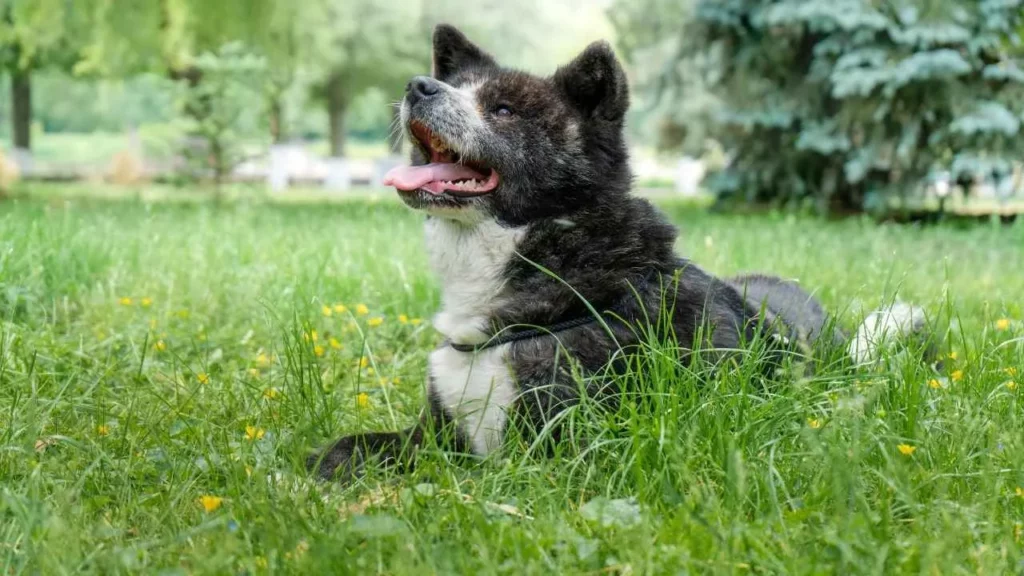
Exercise that matches their temperament
Daily walks and moderate play sessions are essential for both types. American Akitas tend to enjoy slightly more rigorous activity and structured routines. Japanese Akitas are more reserved but still benefit from mental and physical stimulation.
Maintenance beyond grooming
Regular nail trimming, ear checks, and dental care are part of their routine upkeep. These dogs don’t need fancy spa days, but basic care goes a long way. Staying consistent helps avoid health issues and keeps them in their best shape.
Obedience Training and Social Development
Training needs and independence levels
The American Akita is more independent and often tests boundaries during obedience work, as per Royal Canin. Japanese Akitas, while quieter, may also resist direction if bored. Both benefit from proper training introduced early with patience and consistency.
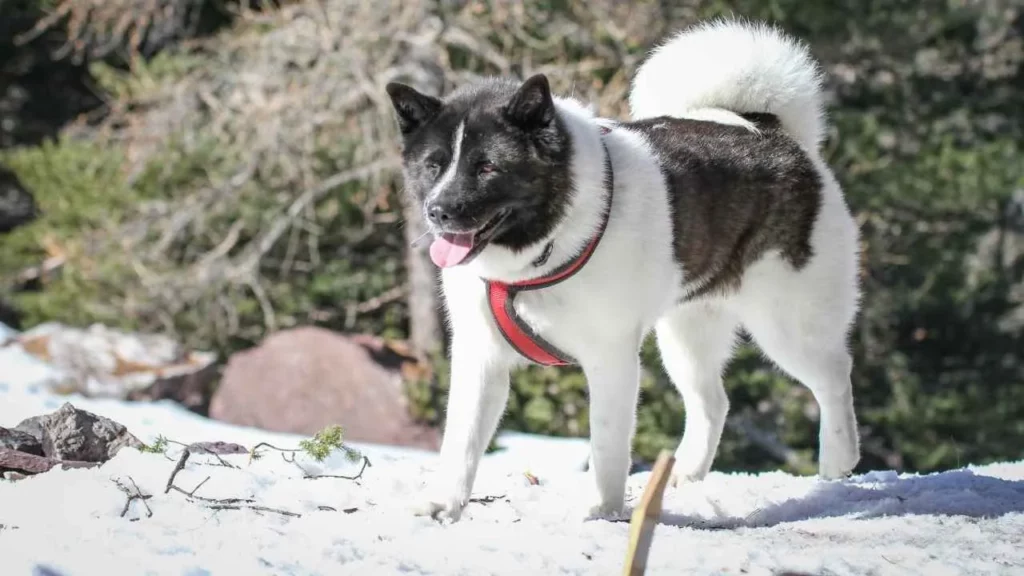
Early socialization makes the difference
Without early exposure, both can grow wary of strangers and stubborn with other animals. Socializing from a young age helps shape more balanced, stable behavior. This is especially important for first-time dog owners handling confident breeds.
Temperament control through structure
Their similarities in temperament include strong loyalty, alertness, and protectiveness toward their family. However, structure and guidance are key to avoiding reactive tendencies. Clear leadership builds mutual respect and trust over time.
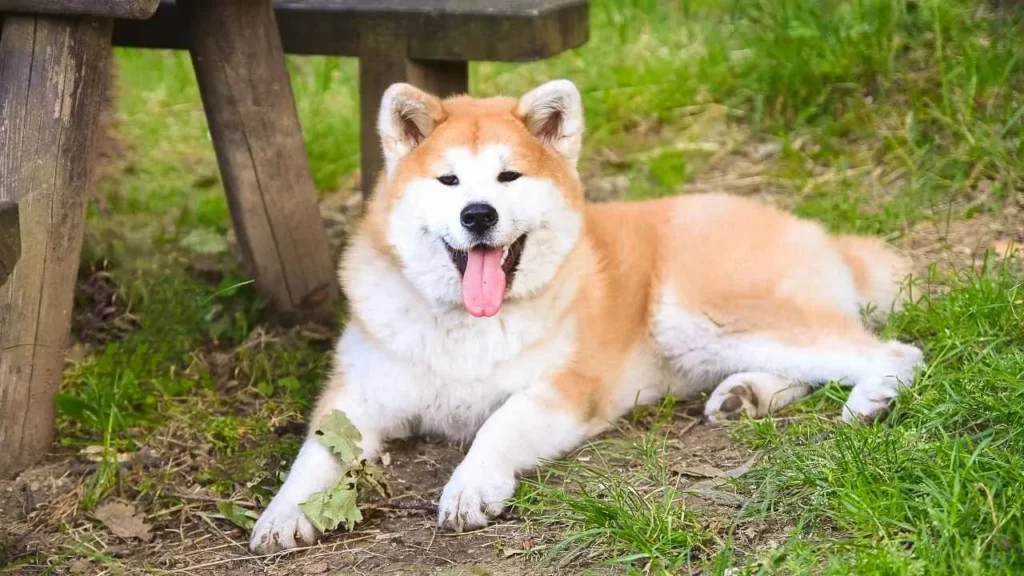
Training style impacts long-term behavior
Positive reinforcement works best—harsh methods only make them shut down or push back. Sessions should be short, purposeful, and engaging to hold their focus. In American Akita vs Japanese comparisons, motivation style often determines progress.
Conclusion
At the end of the day, both the American and Japanese Akita bring something rare to the table—loyalty with depth, presence with restraint. But they speak two different dialects of the same ancient language.
The Japanese Akita Inu stays closer to tradition, both in look and in spirit. Calm, reserved, and unwavering. The American version, recognized by the American Kennel Club as a separate breed, adds size, force, and a strong guard dog instinct.
Neither is better. They simply lead different lives. For families with structure and experience, both can thrive. Just don’t go in thinking they’re interchangeable. They’re not. The original Akita was never meant to be a pet for everyone. That still holds true.
Choose based on energy, space, and your ability to lead. And whether you’re drawn to the subtle presence of the Akita Inu or the bold confidence of its American cousin, you’ll find a loyalty that never folds.


